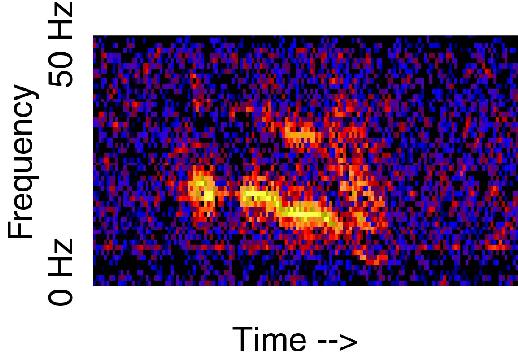 No, the title of this blog entry is not self-explanatory at all. Read on and it will all fall in place…..
No, the title of this blog entry is not self-explanatory at all. Read on and it will all fall in place…..Today while surfing the internet, I came across the website of the Acoustic Monitoring Project run by National Oceanic and Atmospheric Administration (NOAA), a US federal agency focused on the condition of the oceans and the atmosphere. The Acoustic Monitoring Project of the VENTS Program has performed continuous monitoring of ocean noise since August, 1991 using the U.S. Navy SOund SUrveillance System (SOSUS) network and autonomous underwater hydrophones. The website gives heaps of information on various acoustic monitoring projects, the research carried out, the details of equipment and methods used and how this information is applied to acquire some useful knowledge. The sounds recorded are identified as either of seismic, biological or environmental origin. But occasionally sounds are heard that cannot be classified as emerging from any of these sources and are therefore classified as “unidentified sounds”.
This is the category on the ‘multimedia‘ page of the website that interested me the most. The “bloop” and “upsweep” are examples of such unidentified sounds. The page lets you hear these various cool sounds! Upsweep is my personal favourite :). It also, of course, gives information like the place of origin and the spectrograms (example shown in the figure above) of each for those who can actually make sense out of them. All the sound signals are sped up by 10 to 16 times to make them audible to human ear as the original sounds fall in the low-frequency region which we humans cannot tune into. This is what the introductory webpage of the ‘multimedia’ section tells you,
“Low-frequency sound in the ocean can be “viewed” in the form of time versus frequency “spectrograms” (warm colors represent strong energy) or “listened to” if the natural sound is raised to human hearing by “speeding up” the original signals. These sample sounds represent seismic and biological sources, as well as sounds of unknown origin.”
So if you are ready to listen to some really cool sounds, that of an earthquake tremor or a blue whale or an airgun or the “Bloop”, tune in!!!
![Reblog this post [with Zemanta]](https://i0.wp.com/img.zemanta.com/reblog_e.png)



























~~~ Recent comments ~~~